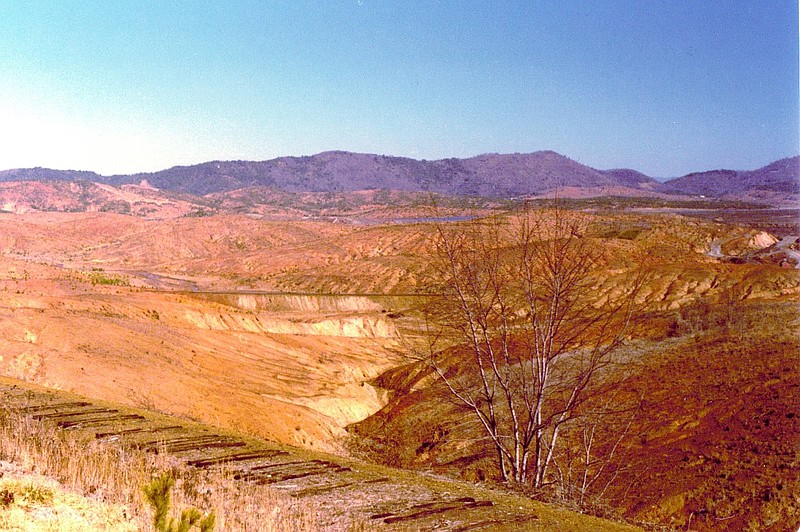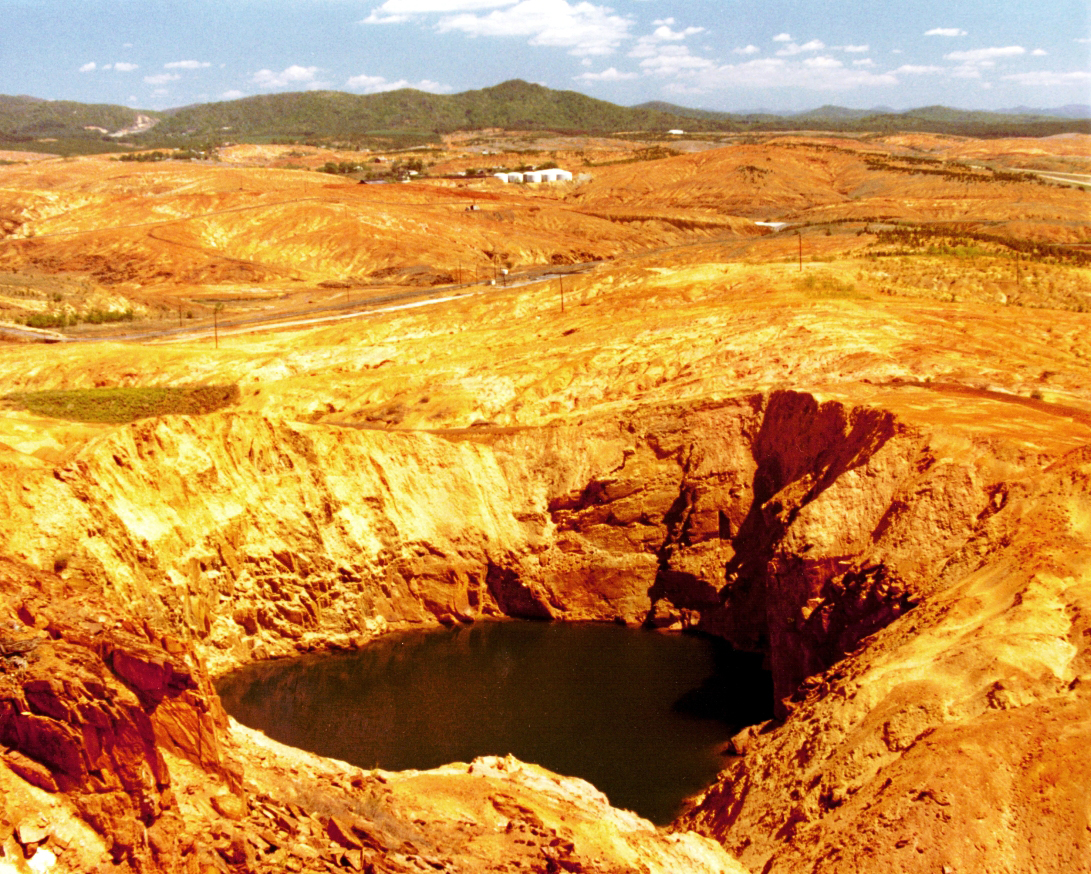Growing up in an area without trees and flowers and with nothing but red dirt is what Debbie Moore of Cleveland, Tenn., hopes to show in Old Town Productions' "It's Home: Memories of the Ducktown Basin" documentary.
The 58-minute movie allows viewers to hear and see how life was - not in a desert, but in an area of the Tennessee mountains east of Cleveland in the mid 1900s.
"The hardest part was trimming down the hours of interviews to fit into our goal to keep the project around one hour," Moore said.
She and her husband asked 18 residents to tell their stories about Ducktown and the surrounding smaller towns when they were at their height in providing the major income and jobs for Polk County.
"They had times of great prosperity there. Ducktown was a booming town," Moore said.
"The documentary focuses on the lifestyle of the families and people living in a very different setting. Living in a small mining town with no grass or trees created some differences, but the human spirit and activities were the same as in any other city in America.
"The familiar red barren hills of the Basin will be seen in numerous photographs and home movie clips in the documentary," said Moore, who will show it Sunday at the Copper Basin High School gym at 3 p.m.
Admission is free.
"There was something really quite unique about the area, so we decided that we would just ask people about growing up there," Moore noted. "I believe two of them had actually had been miners, but the rest of them were just people who had lived in the area.
"Some of the women admitted that they did not know anything about flowers when they were growing up, because they were just not exposed to them. But people still have very fond memories of growing up there."
The discovery of copper in the area in the 1800s, and the mining operations that moved in, resulted in the Ducktown Basin becoming called the Copper Basin.
While most people think the area became deforested by the sulfuric acid that was a byproduct of the copper smelting process, Ducktown Basin Museum director Ken Rush said that was not the case.
"Every tree standing between 1850 and 1878 was cut for fuel. I'm going to repeat that: Every tree standing. They cut every tree for 50 square miles by 1878," Rush said. "The majority of that timber was converted to charcoal, because in the 19th century there was not any railroad into the Basin, there wasn't a road initially and the road that was opened was a wagon road through the Ocoee. The only fuel available was the standing timber, and they even went back and cut up the stumps."
He said the copper industry did provide jobs and boosted the economy of Polk County in the 1950s and 1960s.
"The company that most people are familiar with and was the longtime company of the 20th century would have been the Tennessee Copper Company," Rush said. "They employed 2,500, and that would be their employees, not sub-contractors. At different times they had several hundred subs working as well. They were by far the largest employer in the county and the largest taxpayer in the county.
"Most of those 2,500 employees did not work underground. Most of the jobs were on the surface processing the ore once it came out of the mine."
Rush said the rocks that contained the copper were placed on a pile of wood and "roasted in the open." A byproduct was sulfuric acid, which settled within the Basin and killed any remaining vegetation.
"By the end of the 19th century there was no soil covering left in the Basin, and erosion took place - and erosion on a massive scale," Rush said. "They estimate an average of five feet has been lost off the horizon here."
Visitors to the area today see a different view of the Copper Basin. There is no more sulfuric acid produced, and many trees have been planted on what was barren soil.
"The company, whatever was the company that was on the ground during the era, from the 1930s forward, worked in cooperation with various state and federal agencies," Rush said, noting that TVA, the U.S. Forest Service, the Soil Conservation Service and the Tennessee Division of Forestry were major partners in helping bring the 32,000 acres of trees back to the area.
And now tourism, not mining, is a major industry.
"It is our main economic driver, other than agriculture," said Adrian Lambert, the director of the Polk County Chamber of Commerce. Her records show that 266,201 rafters floated down the Ocoee River in 2014.
A section of the Ocoee was selected for the whitewater slalom event for the 1996 Summer Olympics.
Rafting and other attractions in Polk County brought in $3.78 million in state and local taxes for 2014, Lambert said. According to the U.S. Travel Association, tourism generated $27.19 million in direct spending in the county that year.
Last year close to one million visitors drove along the Ocoee, with thousands of them picnicking along the way, Lambert said. She also mentioned the Hiwassee River for its fishing and rafting and the Tennessee Valley Railroad's Loop Train.
Ron and Debbie Moore released documentaries through their Old Town Productions in 2013 and 2014. The Moores host a weekly radio show on WOOP 99.9 FM called "Old Town Cleveland." The program recounts people, places and things that shaped regional history.
Contact Gary Petty at sports@timesfreepress.com.

